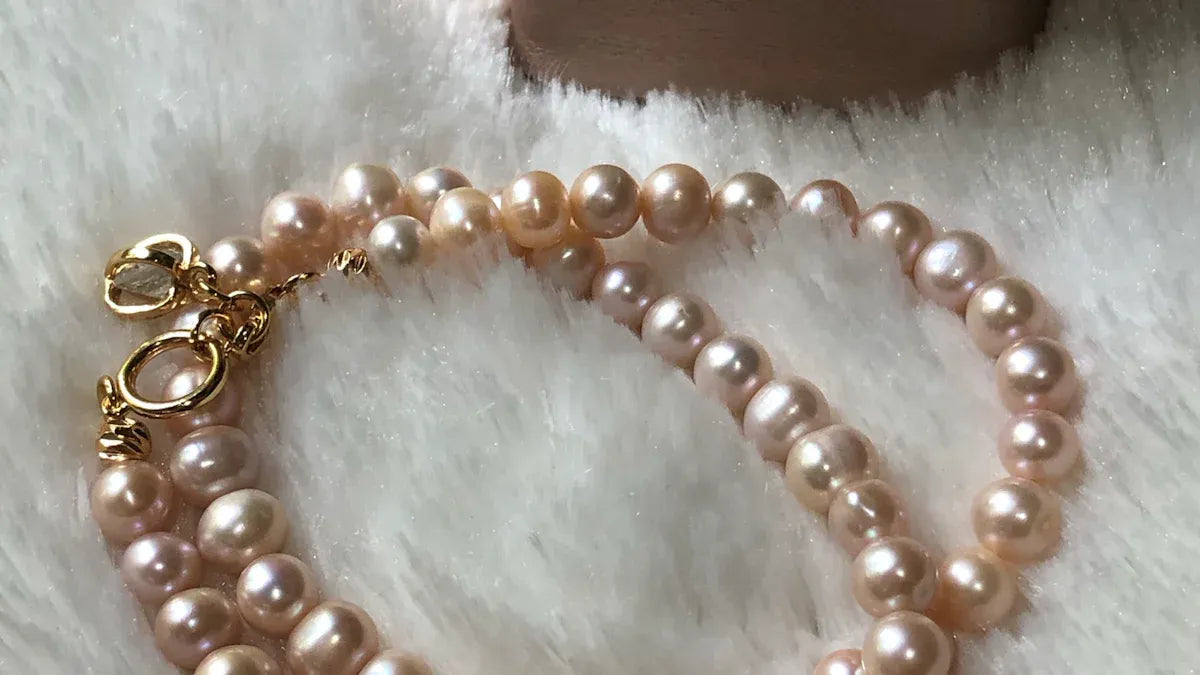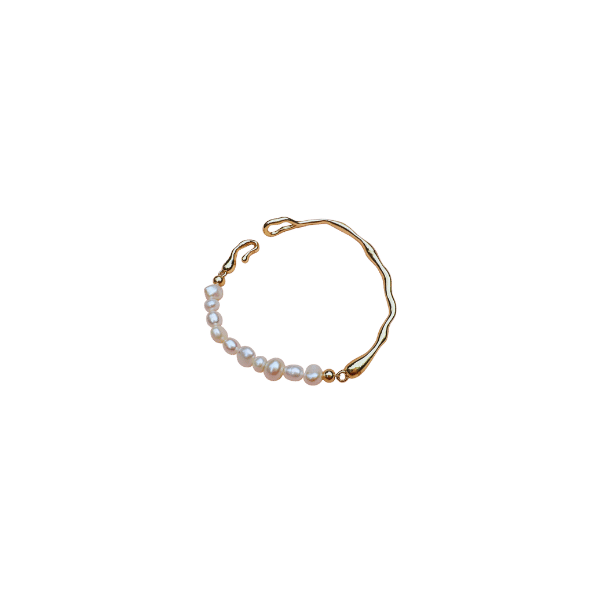-
Size
-
Shape
-
Color
-
Luster
-
Surface
-
Nacre
-
Matching
If you learn these basics, you can pick pearls with more confidence. You will also be able to see real quality.
Key Takeaways
-
Pearl value is based on seven main things: luster, size, shape, color, surface quality, nacre thickness, and matching. Round pearls that are big, shiny, and have few marks are the most rare and worth the most. Natural pearls are hard to find and cost a lot, but cultured pearls are easier to get and can still be very nice. Look for pearls with real colors and thick nacre so they stay pretty and are worth more. Buy pearls from sellers you trust who give certificates, and check that pearls in jewelry sets look alike.
Pearl Value Factors
The Seven Factors
When you look at pearls, you need to know what experts check to decide their worth. The jewelry industry uses seven main pearl value factors. These help you understand what makes one pearl more valuable than another. Here are the seven value factors you should know:
-
Shape: Pearls come in many shapes. Round pearls are the rarest and most valuable. Other shapes, like oval or baroque, can also be beautiful.
-
Size: You measure pearl size in millimeters. Larger pearls are harder to find and usually cost more.
-
Color: Pearls show many colors, from white and cream to gold, pink, and black. Some colors are rare and more desirable.
-
Luster: Luster means how bright and shiny a pearl looks. High luster pearls reflect light like a mirror and are worth more.
-
Nacre Quality: Nacre is the layer that forms the pearl. Thick, even nacre gives pearls better luster and makes them last longer.
-
Surface Quality: Pearls can have spots, bumps, or lines. Fewer marks mean a higher value.
-
Matching: In jewelry with more than one pearl, like a necklace, pearls should look similar in size, shape, color, and luster. Good matching increases value.
Tip: When you shop for pearls, check each of these value factors. This helps you spot quality and avoid paying too much.
Why They Matter
Each of the pearl value factors plays a big role in how much a pearl is worth. You can see how they affect price and desirability in the table below:
|
Factor |
Description and Impact on Value |
|---|---|
|
Luster |
Pearls with strong, mirror-like shine are the most attractive and valuable. |
|
Shape |
Perfectly round pearls are rare and command the highest prices. |
|
Color |
Some colors, like creamy rose or deep gold, are rare and highly prized. |
|
Surface Quality |
Pearls with smooth, clean surfaces look better and cost more. |
|
Nacre Quality |
Thick nacre means better luster and longer-lasting pearls. Thin nacre lowers value. |
|
Size |
Larger pearls are harder to find and become much more valuable as they grow in size. |
|
Matching |
In strands or sets, pearls that match well in all factors make the jewelry look more elegant. |
You should know that these value factors apply to both natural and cultured pearls. Experts use them to judge every pearl. Natural pearls form in the wild and are very rare. They often have thicker nacre and may show more unique shapes. These traits can make them even more valuable, even if the shape is not perfect. Cultured pearls are grown with human help and are more common. For these, uniformity and high quality in all seven pearl value factors matter most. Luster is the most important factor for both types, but rarity and nacre thickness play a bigger role in natural pearls.
When you understand these pearl value factors, you can make smarter choices. You will know what to look for and what makes a pearl truly special.
Pearl Types
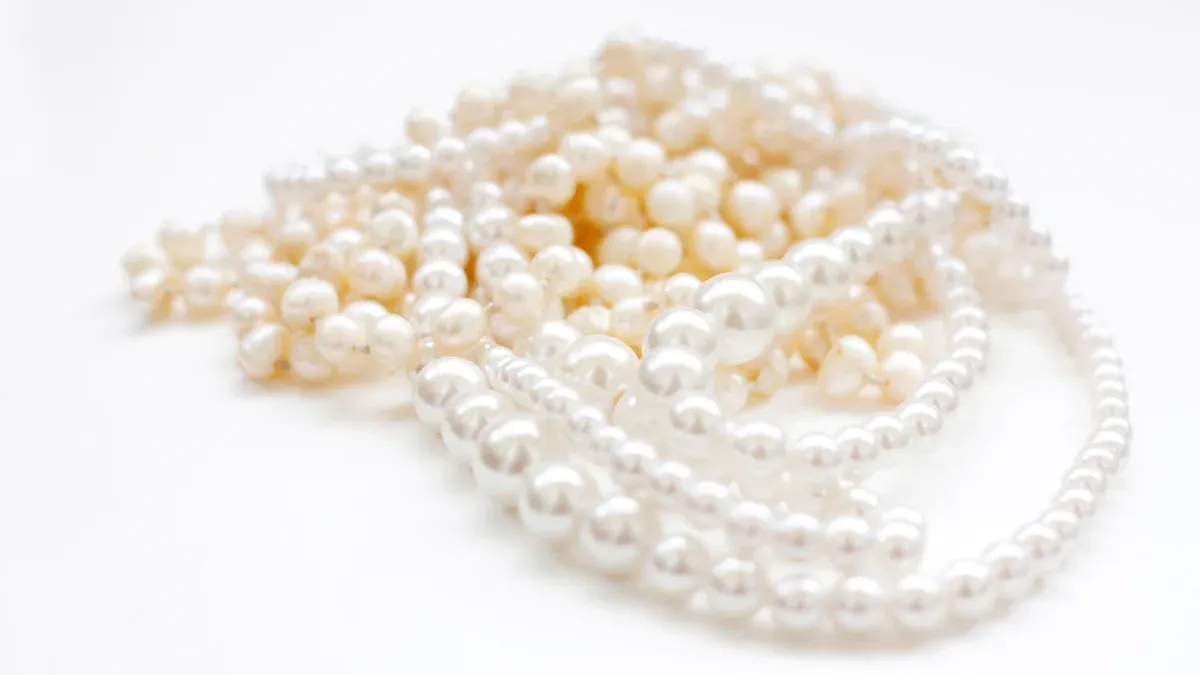
Natural vs. Cultured
There are two main kinds of pearls you can buy. Natural pearls grow in the wild without help from people. Cultured pearls are made with help from humans on pearl farms. The table below shows how natural and cultured pearls are different.
|
Aspect |
Natural Pearls |
Cultured Pearls |
|---|---|---|
|
Rarity |
Very rare; only a few wild oysters make pearls. |
More common; grown by people on farms. |
|
Formation |
Made in nature; each one is special and random. |
Made by farmers using a planned process. |
|
Value |
Much more expensive; prices can be very high. |
Cheaper; prices go from hundreds to thousands. |
|
Market |
Sold at auctions or by fancy jewelers. |
Sold in many stores at different prices. |
Note: Natural pearls cost a lot because they are rare and special. You will mostly see them at fancy auctions or in special collections.
Common Types
Jewelry stores have several types of pearls you will see often. Each type comes from a different place, has its own color, and costs a certain amount. The table below helps you compare the most popular pearls.
|
Pearl Type |
Origin |
Size Range (mm) |
Common Colors |
Price Range |
Luster Description |
|---|---|---|---|---|---|
|
Akoya |
Japan, China |
6–9 |
White, cream, pink |
Medium |
Very shiny, like a mirror |
|
Freshwater |
China |
5–12 |
Pink, lavender, white |
Low to Medium |
Shiny to very shiny |
|
Tahitian |
French Polynesia |
8–14 |
Black, green, peacock |
High |
Shiny to very shiny |
|
South Sea |
Australia, Philippines |
10–16 |
White, golden |
Very High |
Shiny, soft look |
|
Sea of Cortez |
Mexico |
8–12 |
Many colors, rainbow-like |
Very High |
Rainbow shine, strong |
Akoya pearls are great for classic looks and bright shine. Freshwater pearls come in many colors and are a good deal. Tahitian pearls are dark and look exotic. South Sea pearls are the biggest and fanciest. Sea of Cortez pearls are rare and have rainbow colors.
Rare Types
Some pearls are so rare that collectors pay a lot for them. You might hear about these pearls at auctions or in the news.
-
South Sea pearls, especially golden and white ones, are wanted for their big size and rarity. The best strands can sell for over $10,000.
-
Tahitian black pearls are popular for their cool colors and large size. The best ones can cost $25,000 or more.
-
Pearls with rare colors, like blue, gold, or purple, cost more because their colors are special.
-
Natural gray pearls, like Cowdray Pearls, have sold for millions at auctions. These pearls show how being rare and having a story makes them valuable.
Natural pearls with strange colors or shapes often break records at auctions. Size, shine, and smoothness also make pearls cost more.
Shape and Size
Shape Importance
When you look at pearls, shape is one of the first things you notice. Round pearls are the most valuable because they are very rare. Most pearls you see are not perfectly round. In freshwater pearl harvests, less than 3% are true round pearls. This makes round pearls special and more expensive. You will find many pearls that are oval, button-shaped, or baroque. These shapes can look beautiful, but they do not reach the same price as round pearls.
Pearl farms sort pearls by shape and quality. The highest grades, like A–B, have about 45% round pearls. Lower grades have more circled or baroque pearls. If you want a classic look and higher value, choose round pearls. If you like unique styles, baroque pearls offer interesting shapes and lower price.
Tip: Always check the shape when you shop for pearls. Round pearls cost more, but other shapes can be a good choice for style and budget.
|
Pearl Quality Class |
Percentage of Round Pearls |
Percentage of Circled Pearls |
Percentage of Baroque Pearls |
|---|---|---|---|
|
A–B Grade |
45% |
15% |
N/A |
|
Reject Class (RT) |
N/A |
35% |
Nearly 60% |
Size Ranges
Size also plays a big part in pearl value. You measure pearl size in millimeters. Larger pearls are harder to find, so their price goes up. Each pearl type has its own typical size range. Akoya pearls are usually small, from 2 to 10 mm. Freshwater pearls range from 4 to 14 mm. Tahitian pearls start at 8 mm and can reach 16 mm or more. South Sea pearls are the largest, going from 8 mm up to 20 mm.
Here is a table to help you compare size ranges for popular pearl types:
|
Pearl Type |
Typical Size Range (mm) |
Common/Popular Size Range (mm) |
|---|---|---|
|
Akoya |
2.0 - 10.0 |
6.0 - 6.5 to 9.0 - 9.5 |
|
Freshwater |
4.0 - 12.0+ |
6.0 - 7.0 to 10.0 - 11.0 |
|
Tahitian |
8.0 - 9.0 up to 15.0 - 16.0+ |
9.0 - 10.0 to 13.0 |
|
South Sea |
8.0 - 9.0 up to 16.0 - 17.0+ |
9.0 - 10.0 to 13.0 - 14.0 |
You will see that bigger pearls within each type usually have a higher price. For example, a 10 mm Akoya pearl costs much more than a 6 mm Akoya pearl. However, a 10 mm South Sea pearl does not reach the same price as a 10 mm Akoya pearl because rarity and type matter. Saltwater pearls, like Akoya, Tahitian, and South Sea, often have higher prices than freshwater pearls.
Note: When you choose pearls, think about both shape and size. Round, large pearls are rare and valuable, but you can find beautiful pearls in many shapes and sizes for every budget.
Color in Pearls
Color Impact
When you look at pearls, color is one of the first things you notice. The main color, called the body color, can be white, gold, black, or even pink. Some pearls also show extra colors on the surface. These are called overtones. Overtone happens when light bounces off the layers of nacre. For example, Akoya pearls often have a rose overtone, which makes them more valuable. Tahitian pearls can show a peacock overtone, mixing green, blue, and purple. This special effect increases their price.
Another feature, called orient, gives pearls a rainbow shine. Orient appears when light breaks into many colors on the pearl’s surface. Pearls with strong orient look more beautiful and rare. Both overtone and orient make the color look deeper and richer. You will find that pearls with rare or complex color effects cost more.
Here is a table showing the most valuable colors for each major pearl type:
|
Pearl Type |
Most Valuable Colors |
Reason for Value |
Price Range (USD) |
|---|---|---|---|
|
South Sea Pearl |
Golden, White |
Golden pearls prized for large size and thick nacre; white pearls valued for unique overtones. |
$200 - $1500 |
|
Tahitian Pearl |
Black, Peacock, Blue |
Natural black pearls are rare; peacock and blue pearls have unique pigments and rare hues. |
$100 - $1200 |
|
Akoya Pearl |
Pink |
Pink pearls are less common and valued for their pastel shades and quality. |
$100 - $300 |
Tip: Always check for rare overtones and orient. These features make pearls stand out and add to their value.
Natural vs. Treated
Not all pearl colors are natural. Many pearls go through treatments to improve their look. Here are some common methods:
-
Bleaching makes pearls look cleaner and brighter. This treatment is common and usually does not lower value if sellers tell you about it.
-
Dyeing and tinting add new colors to pearls. These methods help pearls sell better but lower their value compared to natural color pearls.
-
Radiation and heating change the color and shine. These are strong treatments and must be shared with buyers.
-
Luster enhancement, like Maeshori, makes pearls shinier. This is often accepted, but sellers do not always mention it.
-
Cleaning, drilling, and polishing help pearls look better but do not change their value.
You should know that natural color pearls are always worth more than treated ones. Dyed or irradiated pearls cost less, even if they look bright and colorful. Always ask if a pearl’s color is natural or treated. Honest sellers will tell you about any treatments.
Note: Treated pearls can look beautiful, but natural color pearls hold their value better over time.
Luster and Nacre Quality
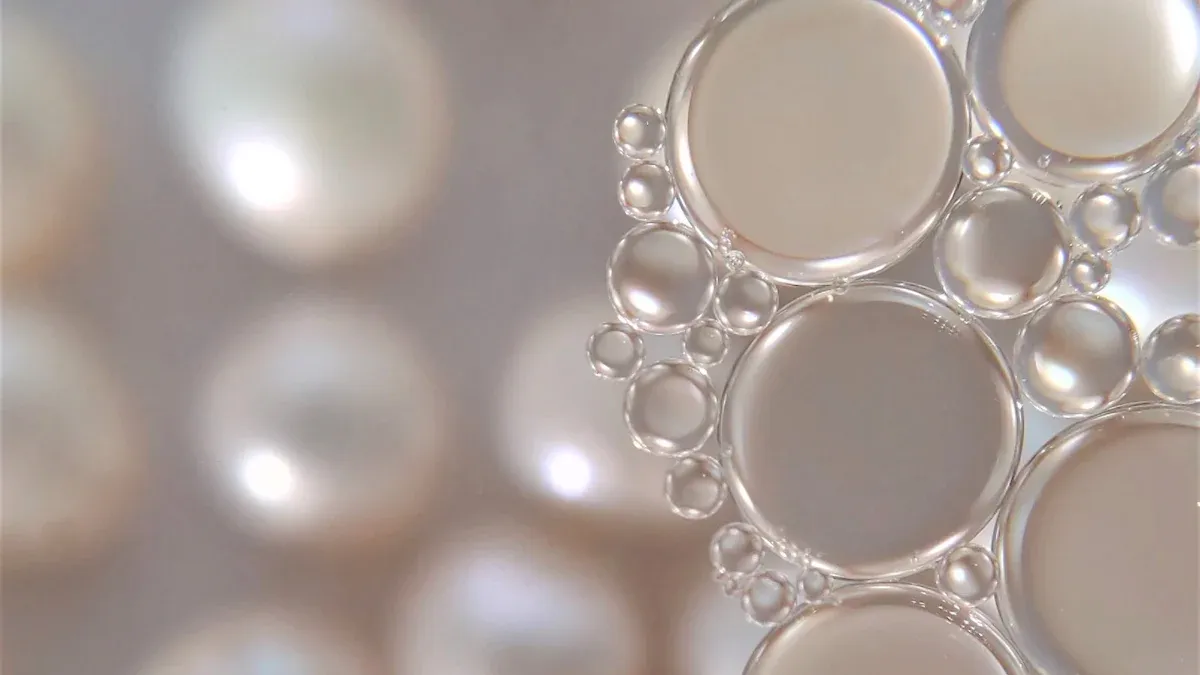
Luster Grades
When you look at pearls, luster is the first thing that catches your eye. Luster means how bright and sharp the light looks on the pearl’s surface. High luster pearls shine like a mirror and show clear reflections. Low luster pearls look dull or cloudy. You can see the difference right away. Luster is the most important factor for pearl value. Pearls with excellent luster always cost more, both in stores and at auctions. If you see a pearl with bright, sharp reflections, you know it has top luster.
You may notice that jewelers use different grading words for luster. Some use grades like A, AA, AAA, or even AAAA. The Gemological Institute of America (GIA) uses words like Excellent, Very Good, Good, Fair, and Poor. Pearls with excellent luster have bright, mirror-like surfaces. Pearls with poor luster look dim and do not reflect light well. When you shop, always check the luster grade. High luster means higher value.
Tip: Hold a pearl under a light. If you see your reflection clearly, the pearl has great luster.
Nacre Importance
Nacre is the layer that covers the pearl. Thick nacre gives pearls their strong luster and makes them last longer. Thin nacre can make pearls look chalky and wear out faster. The GIA now uses a five-level scale for nacre: Excellent, Very Good, Good, Fair, and Poor. This scale checks how thick and even the nacre is and if there are any signs of damage.
Different pearl types have different nacre thickness standards. For example, high-quality South Sea, Tahitian, and Edison pearls need at least 2 mm of nacre. Akoya pearls need at least 0.4 mm. Pearls with thicker nacre usually have better luster and last longer.
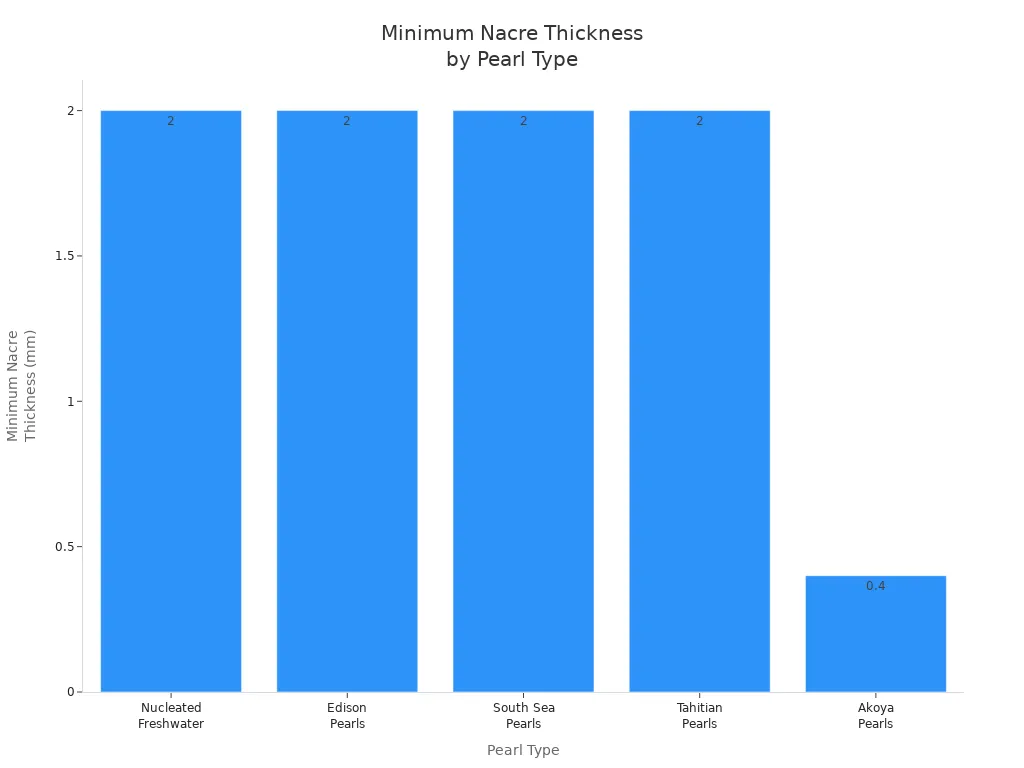
Note: Always ask about nacre thickness and luster when buying pearls. Thick nacre and strong luster mean you get a pearl that is both beautiful and durable.
Surface and Matching
Surface Flaws
When you look at pearls, you will often see small marks or bumps on the surface. These are called surface flaws. Some flaws only affect how the pearl looks, while others can make the pearl weaker. Fewer and less visible flaws mean a pearl is worth more.
Here is a table showing common surface flaws and how they affect value:
|
Surface Flaws |
Category |
Effect on Value and Durability |
|---|---|---|
|
Cracks |
Damaging |
Can get worse over time, make the pearl weaker, and lower the value a lot. |
|
Chips |
Damaging |
May cause the pearl to peel or break, greatly lowering value and durability. |
|
Bumps |
Non-damaging |
Do not get worse, but can make the pearl look less smooth; value depends on how visible. |
|
Spots |
Non-damaging |
Common marks; the more you see, the lower the value. |
|
Circles |
Non-damaging |
Rings around the pearl; value drops if they are easy to see. |
|
Wrinkles |
Non-damaging |
Stay the same over time; value depends on how much you notice them. |
|
Pits |
Non-damaging |
Small holes; do not get worse, but obvious pits lower the value. |
Pearls are also graded by surface quality. Clean pearls have no visible flaws and are worth the most. Lightly spotted pearls have tiny marks you can only see up close. Moderately spotted pearls show marks without a magnifier. Heavily spotted pearls have many flaws you can see easily, which lowers their value and durability.
Tip: Always check the surface under good light. Pearls with fewer flaws last longer and look better.
Matching Pearls
When you buy jewelry with more than one pearl, matching becomes very important. Jewelers look for pearls that fit together in size, shape, color, luster, and surface quality. Well-matched pearls make necklaces, bracelets, and earrings look balanced and beautiful.
You will notice that perfect matching is rare, especially with larger or unique pearls. Akoya pearls often match closely, sometimes with less than 0.15mm difference in size. South Sea and Tahitian pearls may allow a bit more difference, up to 0.50mm, and sometimes use graduated sizes or mixed colors for style. Even if pearls are not exactly the same, jewelers arrange them so the whole piece looks even and pleasing.
A well-matched set always increases the value of the jewelry. If pearls do not match, the piece can look uneven or less elegant. Matching is not just about being identical—it is about creating a smooth, attractive look.
Note: When you shop for multi-pearl jewelry, look for even color, size, and shine. Good matching means higher value and a more polished style.
How Much Are Pearls Worth
Price by Type
You may wonder how much are pearls worth when you shop for jewelry. The answer depends on the type of pearl you choose. Each type has its own price range. Some pearls cost just a few dollars, while others can reach thousands. The table below shows typical price ranges for popular pearl types:
|
Pearl Type |
Low Price Range |
Average Price Range |
Fine Quality Price Range |
|---|---|---|---|
|
Akoya Pearls |
Under $100 |
$150–$300 |
$400–$6,000+ |
|
Freshwater Pearls |
Under $20 |
$30–$50 |
$65–$5,000+ |
|
South Sea Pearls |
Under $200 |
$250–$450 |
$1,200–$135,000+ |
|
Tahitian Pearls |
$200–$600 |
$800–$2,000 |
$2,500–$25,000+ |
|
Natural Saltwater Pearls |
$500 to over $2,000 per pearl |
N/A |
N/A |
|
Conch Pearls |
Rare, no set price |
Rare, no set price |
Rare, no set price |
|
Melo Pearls |
Rare, no set price |
Rare, no set price |
Rare, no set price |

Melo and Conch pearls are extremely rare. Collectors pay high prices for them because of their unique colors and scarcity. These pearls do not have a standard price.
What Affects Price
Many things affect the price of pearls. You will see big differences based on these main factors:
-
Size: Larger pearls cost more. Pearls above 9mm are rare and fetch higher prices.
-
Luster: Bright, mirror-like pearls have a higher price. Luster shows quality.
-
Surface Quality: Fewer flaws mean a higher price. Clean pearls look better and last longer.
-
Shape: Round pearls are rare and get the best price.
-
Color: Some colors are in fashion or rare, which raises the price.
-
Origin: Pearls from famous places, like Japan for Akoya, often have a higher price.
Other things also play a role:
-
Consumer trends and fashion can change the price quickly.
-
Technology in pearl farming improves quality and affects price.
-
Economic growth in countries like China and India increases demand and price.
-
Sustainable and ethical sourcing is important in North America and Europe, which can raise the price.
Tip: Always check these factors before you buy. Knowing what affects price helps you find the best value.
Determining Pearl Quality
Grading Systems
When you want to buy pearls, you need to know how experts judge their quality. Pearl grading systems help you compare pearls and understand what makes one better than another. The most trusted system is the GIA 7 Pearl Value Factors™. This system looks at size, shape, color, luster, surface, nacre, and matching. You can use this method to check every pearl you see.
Here is a table showing popular pearl grading systems and what they cover:
|
Grading System |
Pearl Types Covered |
Key Evaluation Criteria |
Notes |
|---|---|---|---|
|
GIA 7 Pearl Value Factors™ |
All types |
Size, shape, color, luster, surface, nacre, matching |
Used worldwide; gives clear and fair results |
|
A-AAA Scale |
Akoya Pearls |
Surface, luster, shape, nacre thickness |
Common in Japan; Hanadama pearls get x-ray tests |
|
A-AAAA Scale |
Freshwater, Tahitian, South Sea |
Surface, luster, shape, color |
Used by farmers; easy to understand |
|
Chinese Class System |
Freshwater Pearls |
Surface, luster, matching, shape |
Often changed to A-AAAA scale for buyers |
|
Tahitian & South Sea Grading |
Tahitian, South Sea Pearls |
Shape, surface, luster, color |
Checks nacre thickness; color judged for each pearl |
|
Strand Grading |
All types |
Surface, luster |
Used for necklaces; grades can be mixed |
Tip: Always ask for a certificate or grading report when you buy pearls. This helps you trust the quality and know what you are getting.
Buying Tips
You can avoid many problems if you know what to look for when buying pearls. Here are some tips to help you spot value and steer clear of common mistakes:
-
Ask for proper certification, like a scientific research certificate or NGTC certificate. This proves the pearl is real and high quality.
-
Check the luster first. Pearls with weak shine do not look good and lose value.
-
Look for surface flaws. Too many marks or bumps lower the pearl’s beauty and strength.
-
Make sure the nacre is thick. Thin nacre can peel or break, so the pearl will not last.
-
Notice the color and overtone. Pearls with dull or no overtone do not sparkle as much.
-
Avoid pearls that are dyed or irradiated. These pearls often fade and do not keep their color.
-
Be careful with prices that seem too low. Cheap pearls may be treated or poor quality.
Note: You can use pearl grading to compare pearls and make smart choices. If you follow these tips, you will feel confident when determining pearl quality.
Pearls and Sustainability
Environmental Impact
Pearl farming helps the ocean and sea animals. Pearl farms are often safe places for fish and coral. Farmers put their farms in protected spots. This keeps out bad fishing and helps reefs get better. Pearl oysters need clean water to grow. So, farmers must take care of the water and not pollute it.
Pearl farms use green methods that help nature. Here is a table that shows how these ways help the earth:
|
Sustainable Practice |
Environmental Benefit |
|---|---|
|
Eco-Friendly Farming Techniques |
Cuts down pollution by using safe materials and natural filters |
|
Water Quality Management |
Keeps sea life healthy by checking and limiting chemicals |
|
Habitat Restoration |
Helps more animals live by planting mangroves and coral |
|
Sustainable Resource Use |
Uses less and chooses things that can be replaced |
|
Waste Management and Recycling |
Stops pollution and helps with recycling |
|
Community Engagement and Education |
Teaches people about caring for nature and good farming |
|
Certification and Standards |
Makes sure farms follow strict rules for the earth and people |
Pearl farming does not need feed or fertilizer. Oysters clean the water as they eat. This can make the water better. Fish farms add waste and chemicals, but pearl farms do not. Good pearl farmers protect sea animals and keep the ocean clean. They also give jobs and help people who live by the sea.
Tip: If you buy pearls from green farms, you help the ocean and sea life.
Investment Value
Pearls are pretty and a smart, green investment. Pearl farming does not dig up land or cut down trees. Oysters eat plankton, so farms use less power and no big machines. Most pearls today come from farms with strong earth-friendly rules.
Here are some reasons pearls are a green investment:
-
Pearl farming does not hurt land or homes for animals.
-
Oysters clean water every day as they live.
-
Farms use safe materials, so there is less trash.
-
Pearls do not need harsh cleaning after they are picked.
-
Cultured pearls can be made again and again each year.
-
Pearl farms give fair jobs and teach people in the area.
You can feel good when you pick pearls. They are good for the earth, made the right way, and help protect nature. When you buy pearls, you help the planet and the people who care for it.
Note: Pearls are a smart, green, and fair choice compared to other gems.
Understanding pearl value starts with these seven factors:
-
Luster: Bright shine means higher value.
-
Size: Bigger pearls are rarer and worth more.
-
Shape: Round pearls are most prized.
-
Color: Rare and rich colors increase worth.
-
Surface Quality: Fewer marks mean better pearls.
-
Matching: Uniform pearls in jewelry look elegant.
-
Nacre Thickness: Thick nacre gives lasting beauty.
Use this knowledge to shop with confidence. Choose pearls from trusted sellers who offer certificates and clear details. Let your personal style guide your choice, but always check for quality to enjoy pearls that last.
FAQ
What is the most important factor when choosing a pearl?
Luster matters most. You want pearls that shine brightly and reflect light well. High luster means better quality and higher value. Always check how the pearl looks under good lighting.
How can you tell if a pearl is real or fake?
Rub the pearl gently against your tooth. Real pearls feel gritty because of their layers. Fake pearls feel smooth or glassy. You can also ask for a certificate from a trusted seller.
Do pearls lose value over time?
High-quality pearls keep their value if you care for them. Store them away from chemicals and sunlight. Clean them with a soft cloth. Pearls with thick nacre and strong luster last longer.
Can you wear pearls every day?
Yes, you can wear pearls often. Pearls like moisture from your skin. Avoid perfume, hairspray, and harsh cleaners. Put pearls on last when getting ready and wipe them after wearing.
Are colored pearls natural?
Some pearls have natural colors, like golden South Sea or black Tahitian pearls. Many pearls get their color from treatments. Always ask if the color is natural or enhanced before you buy.



